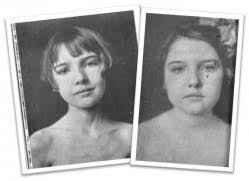Why Eating Less and Moving More isn't all it's cracked up to be
How many times have we heard that all we need to do is ‘Eat less and move more’ to lose weight? This is even the National Health Service’s advice.
How is it working out for us?
Statistics show not good. Obesity is at an all time high and yet we are still offering this advice which is fundamentally wrong.
Let me explain why
The ‘eat less, move more’ is based on a false idea about how our bodies use calories.
Single Compartment Model
According to the singe compartment model, the body changes all foods into simple calories and stores those calories for use in one, single way.
Then the body uses that one compartment to use those calories for energy (exercise, sleeping, living).
If you think about this model as being like the kitchen sink. Calories, like water from the tap, can be flown in and out of the sink. When we want to keep the water for later, we can put a plug in and store it and we can pull the plug out if we need the energy for exercise.
This model treats all calories equally.
This model is completely FALSE.
There are two distinct ways energy is stored in the body; as glycogen in the liver and as body fat.
Two Compartment Model
So energy is stored in two ways in the body. Glycogen in the liver and once the limit has been reached in the liver, then as body fat.
If you think as the liver as a refrigerator and glycogen as the food stored in the refridgerator. The liver is designed for the short term storing of food. It is easy to move food in and out of the refrigerator but the storage space is limited.
Body fat is more like the freezer in the cellar or the garage. It is designed for longer term food storage and you can get as many freezers as you want in the cellar or garage. It is more difficult to access but you can put however much food you want in there.
So when the fridge (liver) is full, you move that food to the freezer (body fat).
Body fat and glycogen are both used in the absence of food but aren’t used equally.
The body prefers to use glycogen for energy rather than body fat. Just as you would find it easier to pop to the fridge for food rather than trek to the damp, dark cellar and defrost the food in the freezer.
As long as there is food in the fridge, we aren’t going to bother with the freezer.
So, if you go to the gym and burn 200 calories, the body will get that energy from the glycogen from the liver. As long as that is available, it won’t access the body fat.
The two compartments are not used equally. You need to almost empty the fridge before you will bother with accessing the freezer. Same with the body.
The body can either burn glycogen or body fat. Not both at the same time.
Insulin’s Role
This is the interesting part.
How easy it is to get to the fat freezer depends on the hormone insulin.
I like to think of insulin as a big burly doorman stopping you from accessing the cellar where your freezer is.
When we are not eating, insulin levels are low, the doorman has taken a break, allowing you access to the freezer. The body can easily get to the stored fat.
When you have low insulin levels you don’t even need to completely empty the fridge (liver) because the fat freezer is so easy to access.
This means that if you are cutting calories and have low insulin levels, it’s easy for your body to access the fat stores because insulin (doorman) isn’t in the way.
Not only does low insulin levels allow access to the fat stores, it actually triggers fat-burning for energy.
If insulin levels are abnormally low, then fat is continually burned. We see this in type 1 diabetes. When someone isn’t producing insulin, they will burn through all their fat stores and cannot gain weight no matter what they eat. Treatment with insulin allows them to store fat again normally.

Before and After insulin treatment with Type 1 Diabetes.
High insulin levels prevent the body from accessing the fat in the freezer and insulin inhibits lipolysis. It actually stops the body from burning fat.
High insulin levels after a meal, signal our body to store some of the incoming food (energy). And while this is happening we are not burning fat.
Intermittent Fasting or not continuously snacking makes sure your body has low insulin levels and therefore you are able to access the fat freezer easily.
This is a similar principle to the low carb diets. Less insulin means you can burn the body fat.
Find out more about Intermittent Fasting